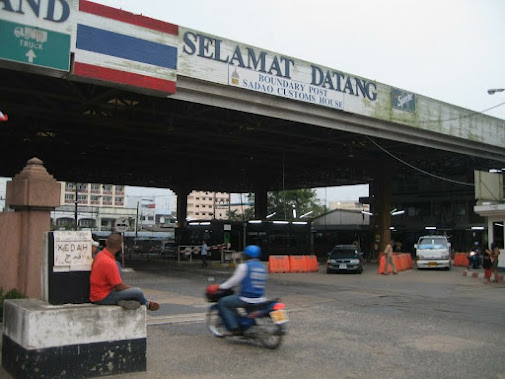The number of tourists visiting Laos has increased 5 percent in the past six months thanks to a rise in the number of Chinese visitors.
More than 2.2 million people visited Laos between January and June, according to Laos’s Tourism Development Department, Ministry of Information, Culture and Tourism.
The number of Chinese visitors jumped by 13 percent while that of Vietnamese visitors increased by 11 percent. The number of visitors from Thailand also rose by 1 percent.
Vientiane Times quoted an unnamed government official as saying that he believed visitor numbers were up because of the ongoing Visit Laos-China Year campaign.
However, the number of South Korean visitors plummeted by 20 percent while that of Japanese visitors sank by 13 percent.
The official told Vientiane Times that the decline in arrivals from some countries was due to circumstances beyond the authorities’ control.
“Some people stayed away because they were unsure of the quality of services here. And although Laos has many enticing tourism products there are several inconveniences, such as poor road access to tourist sites,” the official added.
Laos attracted more than 4.1 million foreign tourists last year, an 8.2 percent increase from the previous year. Tourism generated revenue of more than USD 755 million in 2018.
Meanwhile, it is expected that at least 4.5 million people will visit Laos this year, generating revenue of more than USD 700 million.
.
.
More Chinese tourist expected
Officials believe that, out of 4.5 million expected tourists, 1 million would come from China.
To achieve such a goal, Laos is currently intensifying its efforts to improve services and create more facilities for visitors.
Vang Vieng, one of the most famous tourist destinations in Laos, for instance, has improved the quality of services and made changes to the price of food, accommodation, and the fees charged at tourist attractions.
In Luang Prabang, meanwhile, restaurants have added Chinese dishes to their menus and installed signs written in Chinese at popular tourist sites.
As for Luang Namtha Province, the authorities are encouraging officials to supply useful information to Chinese visitors.
There have also been some other positive developments that might boost the number of Chinese visitors to Laos.
Banque pour le Commerce Exterieur Lao Public (BCEL) has recently teamed up with Chinese payment service provider UnionPay International (UPI) to roll out new QR code payment services in Laos.
The move will enable UnionPay app users to make payments by scanning QR codes at local stores in the country.
UnionPay currently operates one of the most popular mobile payment apps in China, and this means BCEL’s collaboration with UPI would help Laos’s local businesses to reach out to more Chinese visitors, who make up one of the largest sources of tourists.
Separately, Thailand is currently preparing to launch the country’s first bullet train that will run between Bangkok and Beijing, China, with Laos as one of the intermediate stations.
In particular, the first route, a Thai-Sino project linking Bangkok, Nong Khai, Laos and a Chinese city Mohan in the far Northeast, is currently under construction and is scheduled to be completed by 2023.
Where are the Koreans?
Laos has been one of the most popular destinations for South Korean tourists thanks to the reality TV show, “Youth Over Flowers,” which aired in 2014.
The number of visitors from South Korea to Laos grew in 2015 and 2016, finally beginning to plateau in 2017. The overall market share of South Korea rose to 4.4 percent in 2017, however, according to a report by Laos’s Ministry of Information, Culture and Tourism. The number jumped from 96,085 in 2014 to 170,571 in 2017.
However, local tourism experts have repeatedly suggested that such a number is decreasing, but there had been no official number released by the Lao government until now.
Confirmation from the tourism ministry that the number of South Korean visitors plummeted by 20 percent in the first six months is therefore highly significant.
One Vientiane-based tourism expert cited a lack of promotional efforts as one of the reasons to contribute to the drop in such number.
“The TV show that led to the surge came out five years ago. Out of sight, out of mind. No one made any more major Korean TV shows or films, to my knowledge,” the expert told The Laotian Times.
As he pointed out, several South Korean broadcasters released similar shows to repeat the success of “Youth Over Flowers,” but none of them was able to attract similar viewer numbers.
The expert also noted that not enough has been done to promote and encourage people to return to Laos.
According to the latest survey conducted by the tourism ministry, only 7.9 percent of respondents said it was their returning visit to Laos. In contrast, first-time visitors accounted for 75.2 percent.
Time for a Diversification?
The Lao government invited 12 representatives from Malaysia, Singapore, Thailand, China, Japan and South Korea to Bolikhamxay and Khammouane provinces, in a bid to promote other parts of the country.
The familiarization trip to the two provinces took place between July 12 and 17 and was designed to publicize some of Laos’ tourist attractions and encourage the tour operators to include some of these locations in their package tours.
It marked the Lao government’s latest effort to promote lesser-known tourist sites to foreigners, and this work is expected to continue in the coming years.
Source - The Laotian Times





































